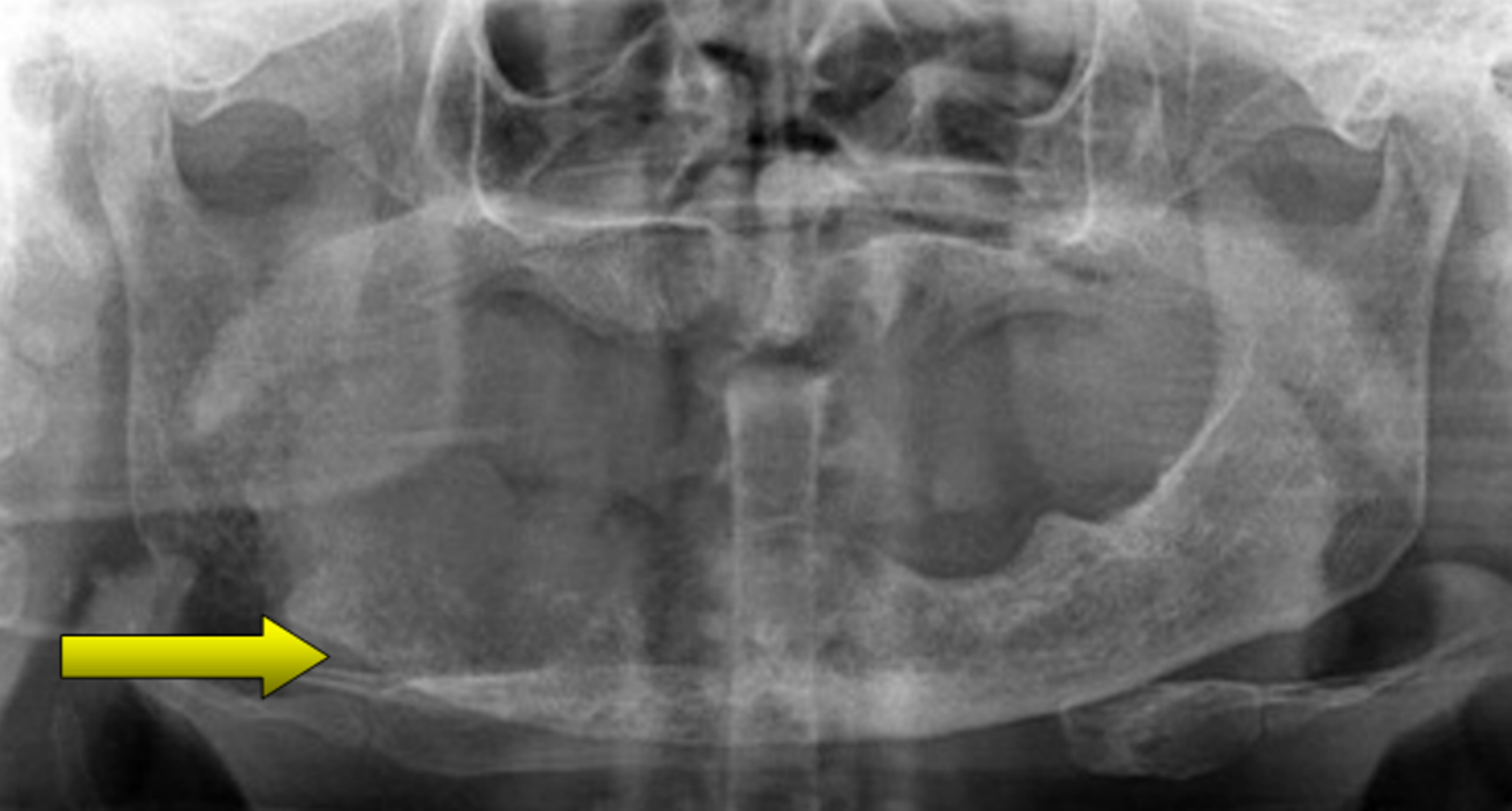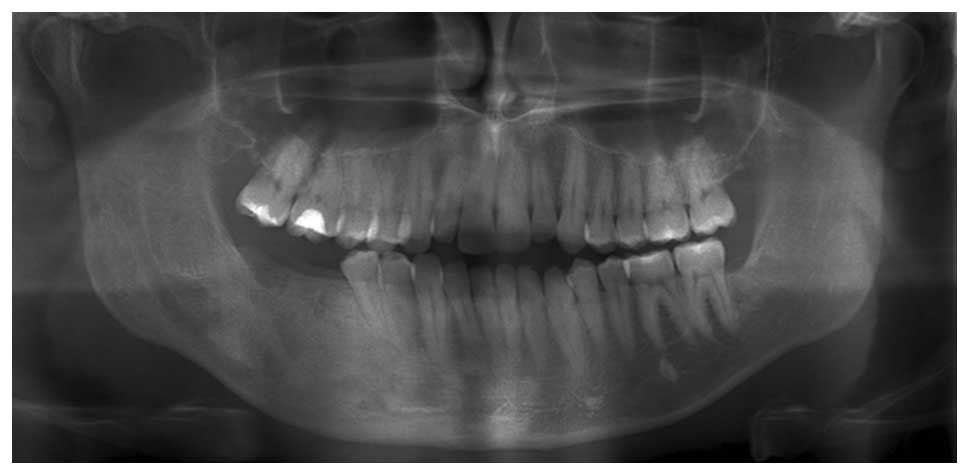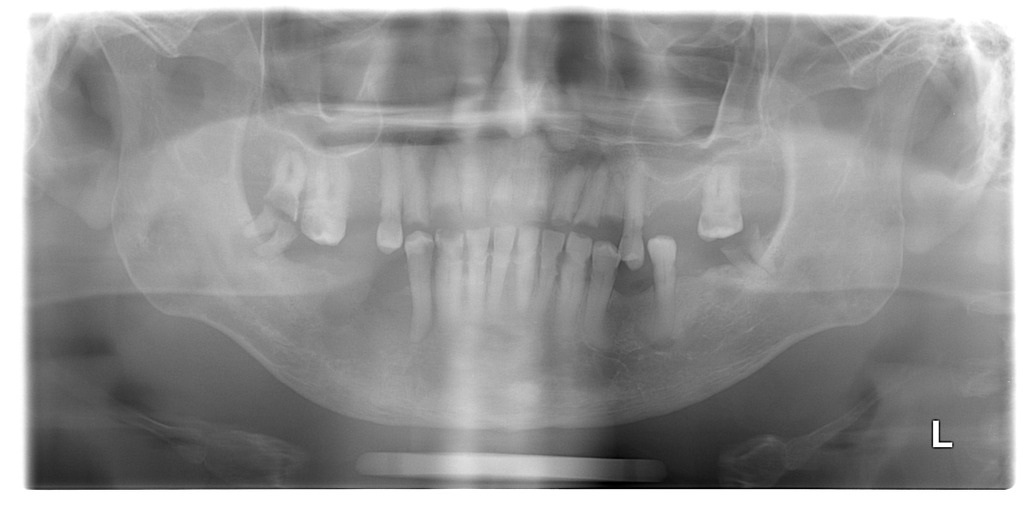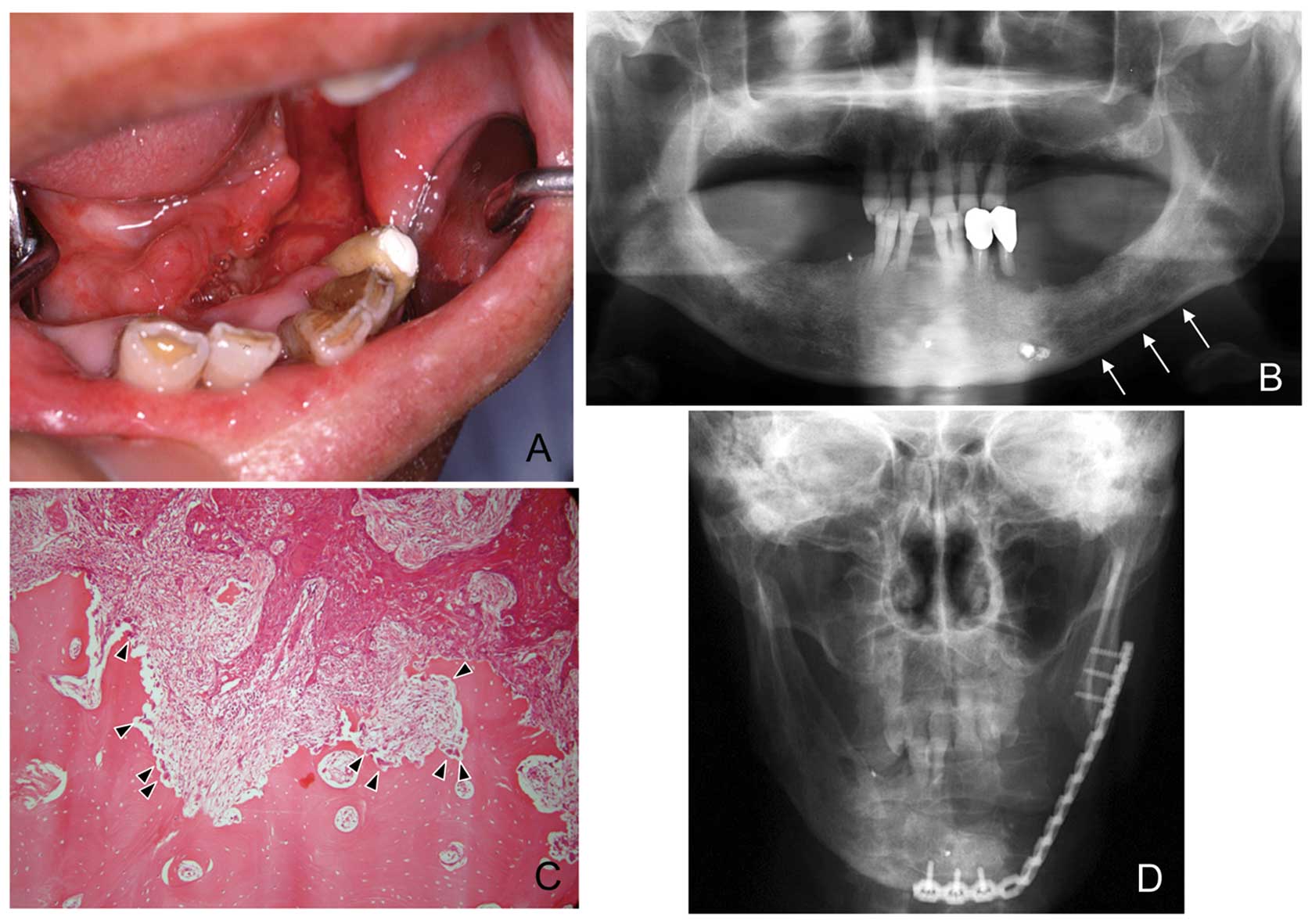Oral squamous cell carcinoma is cancer of the lining of the oral cavity including the gingiva gums tongue palate and tonsils. About two out of 10 skin cancers are squamous cell carcinomas according to the American Cancer.
 Primary Intraosseous Squamous Cell Carcinoma Arising From Keratocystic Odontogenic Tumor Ck 17 Evaluation Metgud R Rai Ba Bulgannawar Ba Gupta K J Ntr Univ Health Sci
Primary Intraosseous Squamous Cell Carcinoma Arising From Keratocystic Odontogenic Tumor Ck 17 Evaluation Metgud R Rai Ba Bulgannawar Ba Gupta K J Ntr Univ Health Sci
Squamous cell carcinoma SCC also known as squamous cell cancer is the second most common type of skin cancer following basal cell carcinoma.

Squamous cell carcinoma jaw. These are called squamous cell carcinomas. Squamous cell carcinoma usually develops in areas of leukoplakia white patches of cells that do not rub off. These are the things that youre trying to.
Erythroplakia and Squamous Cell Carcinoma Erythroplakia is a general term for red flat or eroded velvety lesions that develop in the mouth. Most lip and oral cavity cancers start in squamous cells the thin flat cells lining the inside of the lips and oral cavity. In this image an exophytic squamous cell carcinoma on the tongue is surrounded by a margin of erythroplakia.
Oral Cancer Squamous Cell Carcinoma of the Floor of the Mouth in oncology squamous cell cancers of the head and neck are often considered together because they share many similarities in incidence cancer type predisposing factors pathological features treatment and prognosis. Squamous cell cancers can be difficult to identify and may take various forms such as discolorations sores and lumps. Owners may notice a.
1 It begins in the squamous skin cells located in the top layer of skin called the epidermis. Image provided by Jonathan A. Once SCC has spread.
Squamous cell carcinoma SCC is the most common oral malignancy in cats occurring usually around the jaw bones or the tongue of the cat. This tumour can start anywhere in the oral cavity although most start on the side of the tongue lateral tongue or the floor of the mouth. Despite sharing the name squamous cell carcinoma the SCCs of different body sites can show differences in their presented symptoms natural history prognosis and response to treatment.
In this section we will be specifically talking about oral squamous cell carcinoma in cats. Squamous Cell Carcinoma SCC of Oral Cavity is a common malignant tumor of the mouth that typically affects elderly men and women. Squamous cell carcinoma is the most common type of mouth cancer accounting for 9 out of 10 cases.
Difficulty chewing and eating dysphagia Bad breath. Swelling under the jaw or along the neck from enlarged lymph nodes Causes. Cancers in the lining of the mouth gums or tongue may appear as white or red patches rather than sores or lumps.
Cancer cells may spread into deeper tissue as the cancer grows. The 5-year survival is 99 percent when detected early. Swollen or malformed facial appearance.
Smokers may have a. The cause of the condition is unknown but genetic mutations may be involved. Growth in the mouth.
Squamous cell carcinoma in the oral cavity often starts from a pre-cancerous disease called squamous dysplasia. Tumors are locally invasive and can extend into the bones of the upper or lower jaw. Blood coming from the mouth.
Squamous-cell carcinoma of the vagina. Squamous Cell Carcinoma on the Tongue Heres a little less obvious lesion. Squamous cell carcinoma SCC is one of the most common types of skin cancer.
Squamous cell carcinoma is an aggressive cancer in the cat and is often not diagnosed until the tumor is advanced. Its kind of erosive like erythroplakia regular slightly raised leukoplakia but this is also a squamous cell carcinoma along the lateral border of the tongue. However squamous cell tumors have been seen in dogs as young as three years old.
Squamous cell carcinoma SCC is the most common oral malignancy in the cat arising from either the jaw bones or the tongue. The rate of metastasis at the time of diagnosis is low. It is more aggressive than conventional squamous cell carcinoma affecting other body regions.
Squamous dysplasia may be present for many years before turning into squamous cell carcinoma. Less common types of mouth cancer include. It is the most common oral cancer in cats.
Squamous cell carcinoma SCC generally has a high survival rate. Osteonecrosis of the jaw ONJ is a well-known adverse drug reaction to bisphosphonate BP treatmentONJ diagnosis is usually based on the patients medicalmedication histories and on the clinicalradiological features of necrotic bone frequently. This cancer starts in the flat squamous cells found in the upper part of the epidermis the skins outermost layer.
A type of vaginal cancer. Squamous cell carcinoma is the most common type of cancer to start in the oral cavity. Squamous cells are found in many areas of the body including the inside of the mouth and in the skin.
What are the symptoms. About one million cases are diagnosed each year in the United States.
 Primary Intraosseous Carcinoma Of The Mandible A Report Of Two Cases Sengupta S Vij H Vij R J Oral Maxillofac Pathol
Primary Intraosseous Carcinoma Of The Mandible A Report Of Two Cases Sengupta S Vij H Vij R J Oral Maxillofac Pathol
 After Squamous Cell Carcinoma Appreciating The Little Things Md Anderson Cancer Center
After Squamous Cell Carcinoma Appreciating The Little Things Md Anderson Cancer Center
 Exophytic Growth Of An Oral Acantholytic Squamous Cell Carcinoma On The Download Scientific Diagram
Exophytic Growth Of An Oral Acantholytic Squamous Cell Carcinoma On The Download Scientific Diagram
 Cureus Metastatic Tumour To The Mandible A Diagnostic And Management Dilemma
Cureus Metastatic Tumour To The Mandible A Diagnostic And Management Dilemma
 A Squamous Cell Carcinoma Of The Lower Gum Mr Luke Cascarini
A Squamous Cell Carcinoma Of The Lower Gum Mr Luke Cascarini
 Solid Type Primary Intraosseous Squamous Cell Carcinoma In The Mandible Report Of A Rare Case Sciencedirect
Solid Type Primary Intraosseous Squamous Cell Carcinoma In The Mandible Report Of A Rare Case Sciencedirect
 Jaw Tumors Ear Nose And Throat Disorders Msd Manual Professional Edition
Jaw Tumors Ear Nose And Throat Disorders Msd Manual Professional Edition
 Primary Intraosseous Squamous Cell Carcinoma Of The Mandible Arising From An Infected Odontogenic Cyst A Case Report And Review Of The Literature
Primary Intraosseous Squamous Cell Carcinoma Of The Mandible Arising From An Infected Odontogenic Cyst A Case Report And Review Of The Literature
 Primary Intraosseous Squamous Cell Carcinoma Arising From Ameloblastoma Of The Mandible A Case Report Sciencedirect
Primary Intraosseous Squamous Cell Carcinoma Arising From Ameloblastoma Of The Mandible A Case Report Sciencedirect
 Squamous Cell Carcincoma Mandible Radiology Case Radiopaedia Org
Squamous Cell Carcincoma Mandible Radiology Case Radiopaedia Org

 Jaw Tumors Ear Nose And Throat Disorders Msd Manual Professional Edition
Jaw Tumors Ear Nose And Throat Disorders Msd Manual Professional Edition
 Chronic Progression Of Recurrent Orthokeratinized Odontogenic Cyst Into Squamous Cell Carcinoma A Case Report
Chronic Progression Of Recurrent Orthokeratinized Odontogenic Cyst Into Squamous Cell Carcinoma A Case Report
 The Rankl Rank System As A Therapeutic Target For Bone Invasion By Oral Squamous Cell Carcinoma Review
The Rankl Rank System As A Therapeutic Target For Bone Invasion By Oral Squamous Cell Carcinoma Review
No comments:
Post a Comment
Note: Only a member of this blog may post a comment.